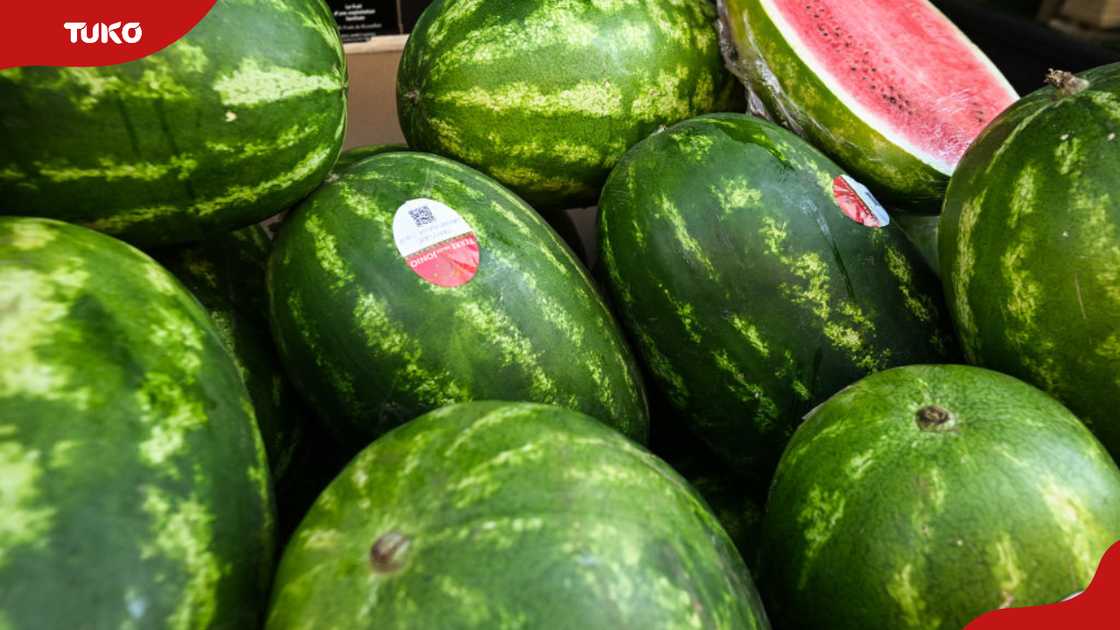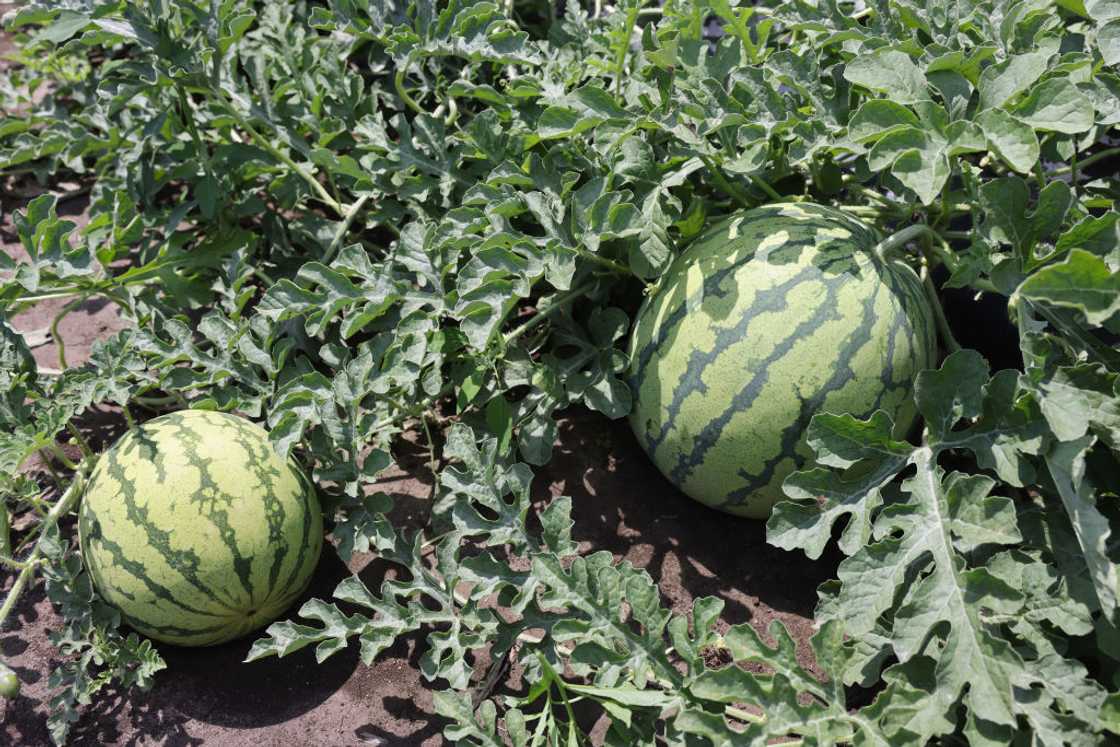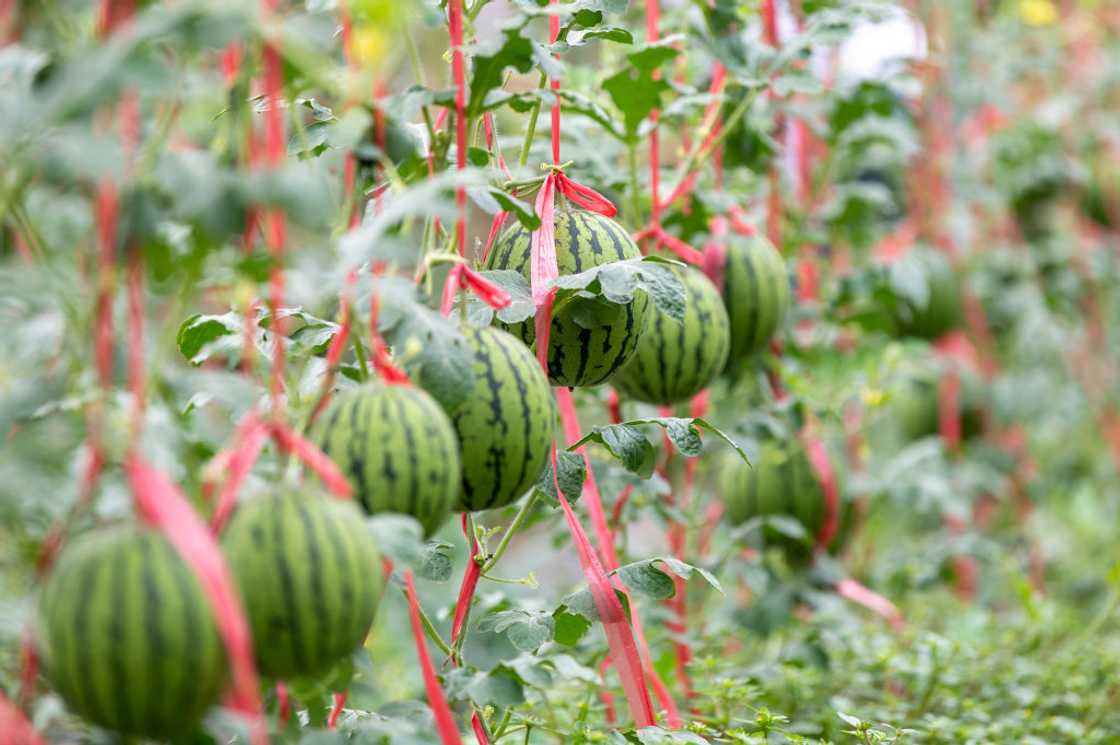Learning how to grow watermelons in your garden can be immensely satisfying, as it provides you with delicious, succulent fruit right at home. The process simply involves: Get the soil ready, sow the seeds, and take good care of your watermelon plants.

Key takeaways
- Watermelons grow best in loamy, sandy soils that drain well, maintaining a slightly acidic to neutral pH level between 6.0 and 7.5.
- They flourish in temperatures ranging from 20–30°C and require an annual precipitation of 600–1,200 millimeters; additional watering is necessary to maintain adequate moisture levels.
- Selecting premium hybrid varieties such as Sweet Rose F1, Crimson Sweet, and Sugar Baby enhances both crop output and produce quality.
- The ideal time to plant is either February or March to ensure optimum development and profitable yields, with crops typically taking between 3 and 4 months to mature.
- Manure from cows, along with fertilizers such as DAP and Polysulphate, promote plant growth. Adequate watering and good soil drainage help avoid issues like cracking and hindered development.
Optimal soil type for growing watermelons
Watermelons flourish in loamy, sandy soils with excellent drainage. They may have difficulty growing in heavy clay soil that doesn’t drain well. Moreover, these plants favor a somewhat acidic to neutral pH level. soil pH ranging between 6.0 and 7.5 .
Climate requirements for watermelon
Watermelons can thrive at elevations reaching as high as 1,500 meters above sea level; however, lowlands provide the most suitable growing conditions. This crop thrives in temperatures ranging from 20 and 30 degrees Celsius and annual precipitation ranging from 600 to 1,200 millimeters Irrigation is crucial for ensuring steady moisture levels.
Watermelon seed selection
To ensure an abundant yield, selecting the appropriate type of seed is essential. Popular types of watermelons consist of Sweet Rose F1, Crimson Sweet, Sugar Baby, Kubwa F1, Zuri F1, and Sukari F1. Many farmers opt for hybrid seeds due to their superior fruit production. These seeds can typically be purchased from agricultural veterinarians' offices and agri-dealerships.
How to Cultivate Watermelons for Novices

Watermelons flourish in regions with warm climates. When planting them, choose a location that receives ample sunlight and has soil that drains well. Below is a beginner’s guide on cultivating watermelons:
1. Select a Sunny Spot: Ensure your garden area gets at least 8 hours of direct sun daily.
2. Prepare Well-Draining Soil: Watermelons prefer loose, fertile ground that doesn’t retain excess moisture.
3. Plant Seeds Directly: Sow seeds once all danger of frost has passed and temperatures consistently stay above 70°F (about 21°C).
4. Maintain Adequate Spacing: Space plants about 5 feet apart to allow room for growth and air circulation.
5. Keep Consistent Moisture: While they require regular watering, avoid overwatering as this can lead to root diseases.
Follow these steps, and you’ll be enjoying home-grown watermelons before long!
- The space between rows should be maintained at 3 to 6 feet, with each plant being spaced 3 to 4 feet apart.
- Create holes that are approximately two times wider and deeper than the size of the root ball.
- Include thoroughly decomposed manure or compost in each planting hole.
- Insert a seedling into each hole and lightly fill around the roots with dirt.
- Thoroughly water the young plants to assist them in acclimating.
- Maintain evenly moist soil without allowing it to become soggy; watermelon plants require approximately 1 inch of water each week through either rainfall or watering.
- You can help the plants by using a trellis or stakes to keep the fruit off the ground.
What is the optimal month for sowing watermelons?
Typically, the climate in March is favorable, providing ideal conditions for melon cultivation and potential sales if you have access to irrigation. Nevertheless, since water availability may restrict production, sowing melons in February guarantees better financial returns, as the market won’t be saturated from April through May.
What is the growth period for watermelons?
Watermelons typically take 3 to 4 months To reach maturity post-planting, this varies based on the type and environmental conditions. Determining when a watermelon should be harvested isn’t always straightforward. Look at the underside of the fruit for a creamy or vividly yellow patch; if you see a white or light green area instead, it signifies that it’s still unripe.
Furthermore, inspect the curved tendril nearest to the melon on the vine; once it withers and becomes brown, the melon ought to be ripe. Once picked, watermelons can remain fresh for slightly more than seven days at room temperature or approximately two weeks when kept chilled.

FAQs about watermelon farming
- To accelerate the growth of watermelons, ensure they receive a steady amount of water. Using drip irrigation or a soaker hose will yield the best outcomes.
- Why have watermelons ceased production? Watermelon growth may be halted due to dense or clay-rich soil lacking adequate drainage.
- What type of fertilizer enhances the size of watermelons? Watermelon size and quality can be improved using Polysulphate fertilizer.
- Yes, cow dung benefits watermelons. Research indicates that both cattle manure and synthetic fertilizers enhance the quality of watermelon produce.
- What causes watermelons to split during growth? Watermelons may split as they grow due to inconsistent watering practices, specifically when there is an abundance of water.
- Yes, DAP fertilizer is beneficial for watermelons. It is favored due to its high phosphorus content, aiding in robust root growth of the plant.
- To accelerate watermelon growth, consider planting them on small mounds or raised beds. This hilling technique enhances germination rates, boosts growth rate, and improves drainage, thereby fostering healthier plants.
Final word
To ensure a bountiful yield when cultivating watermelons, it’s crucial to understand the planting process. Adhering to correct procedures—from choosing a spot that receives ample sunlight and has good drainage to keeping the soil evenly moist—will lead to success. These instructions serve as a robust base whether you’re new to farming or a seasoned pro looking to grow melons effectively.
INSPIRATIONS DIGITAL.co.ke has released an article on tomato farming in Kenya. The country offers a perfect setting for cultivating tomatoes throughout the year. These fruits are essential in Kenyan cooking, commonly utilized in numerous recipes and condiments.
Growing tomatoes helps sustain local communities and increases earnings via both home and overseas sales. Should you be considering tomato cultivation, review this piece for comprehensive guidance.


No comments:
Post a Comment